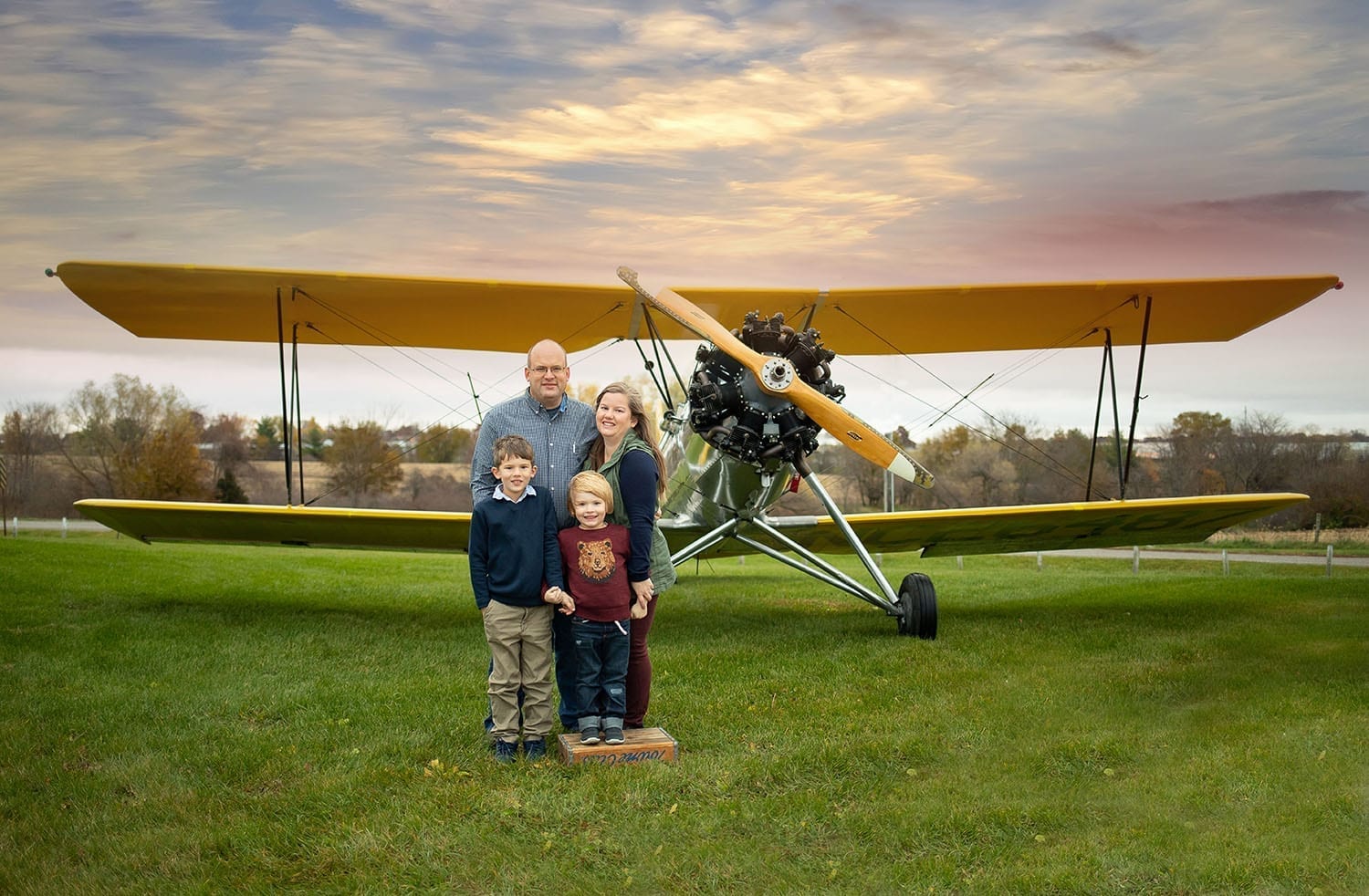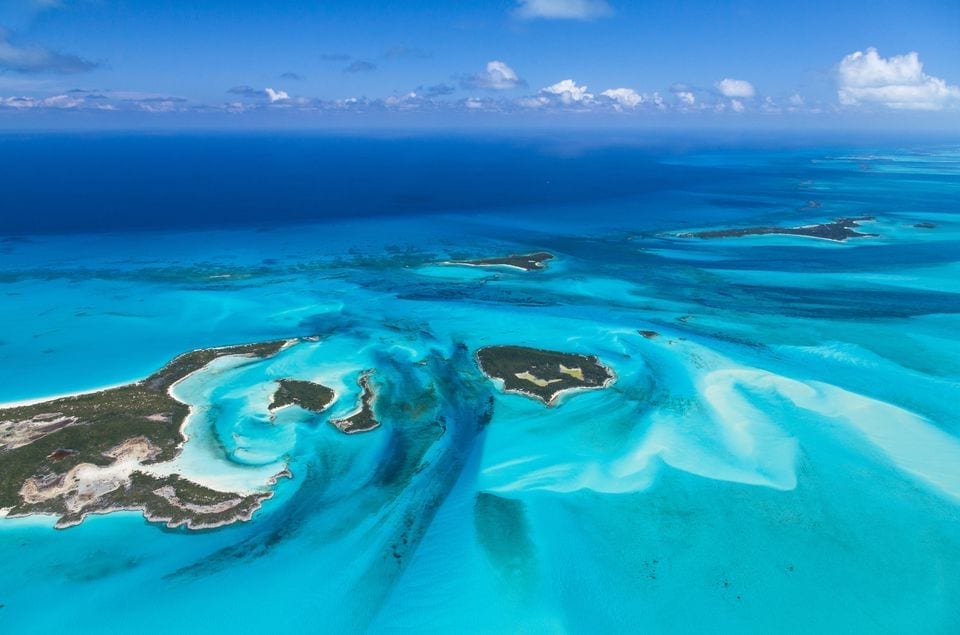
Beast on Paris Mountain: racing a thunderstorm
I was thereWe banked north and both of us saw what had been developing while we were engrossed in our pattern work. There was a beast sitting on top of Paris Mountain and it seemed intent on eating airplanes. KGMU was in front of us at around one thousand feet of elevation. Paris Mountain was only four nautical miles north, extending another thousand feet above that. The beast stood a few thousand feet over Paris—close and imposing.

When absolutely, positively nobody believes you
I was thereMiles ahead, the familiar view of the Sacramento Delta with its intricate sloughs, channels, and levees, had been replaced by an enormous inland sea. There was no mistaking it. How could I not know about this! I queried ATC with a mixture of bafflement and curiosity.

A satisfying long cross country, with one flaw
I was thereI planned to have Piper 4308M from 0900 to 1300 for my long solo cross country. As I pulled into the parking lot, my instructor’s pickup was already there. I had spoken to him about arriving early to pre-flight the Piper. I had been obsessing about the weather leading up to this flight and repeatedly looked at each airport along my route. I was worried about high winds in the days prior to my flight.

Once was enough—riding the Aluminum Overcast
I was thereI grabbed a chance to take a ride on the Experimental Aircraft Association’s restored B-17, Aluminum Overcast. I had grown up with stories of those airplanes and the men who flew in them. I had to take the chance to ride in one. And so it was that one beautiful spring day, I clambered aboard and took a seat in the back of that big machine.

Flying in the coronavirus sky—a freight pilot’s perspective
I was thereToday, there is no global terrorist threat or war keeping airplanes out of the sky. The threat is a microscopic organism, silent but still deadly as it spreads around the world. On the ground, people’s lives have been disrupted, in ways small and large. But from 33,000 feet, the silence gives the feeling of a much more dramatic shift: like a Twilight Zone episode, in which everyone below me has disappeared.

A tribute to an aviation supermom
I was thereAs I walk into the terminal building to grab my handheld radio, the K model Skyhawk works its way back to the end of the runway for yet another student solo. A momentous occasion for sure, but not that abnormal at our busy little airport. But tonight is different you see. A very special mother is PIC on this flight. My wife, Megan, mother to our (one at the time) son is making her first solo on this calm, quiet Sunday night.

A medevac tale of two cities
I was thereI came on shift as pilot for the fixed-wing at 7am, and the request for medevac was relayed to me. By now the snow was letting up and weather was forecast above minimums. I called the snowplow operator for an update on conditions. He had been plowing in the storm, the runway was acceptable, and he promised to continue working on it. Less than an hour later, we were on approach.

A long ferry flight: the Bermuda Triangle, icing, and more
I was thereThe Bermuda Triangle, also known as the Devil’s Triangle, is a loosely defined area between Bermuda, Miami, and Puerto Rico. There have been many cases of ships and aircraft along with their crews mysteriously disappearing with no trace. There have been theories from plausible to ridiculous, including it being occupied by aliens from outer space. The following account is from personal experience.

A minor electrical problem in Vietnam becomes a major problem
I was thereWe scrambled towards the aircraft and I headed straight for the cockpit. The flight mechanic fired up the APU (power supply). As I got into the cockpit, I hit the starter switch for the number one engine. Nothing happened. I called back to the flight mechanic and asked him if he had the APU online. He said yes he had it online. I tried the number one starter again with no results.

It was a dark and stormy night…
I was thereA Phantom C, known as a “Chuck,” took off and had a hard-over rudder. That is a really big emergency in a Phantom. It not only poses a controllability program across the flight regime, but also has some complications in terms of interface with the other flight controls and the nose gear steering. Implications include a very fast approach speed for controllability and the need to engage an arresting gear.

I survived the deadliest helicopter crash in European history
I was thereOn the 6th of November 1986, at 1132 hours, I was the Captain of a Chinook helicopter that crashed just two miles short of its destination, the Sumburgh Airport in the Shetland Islands, 150 nautical miles north of the mainland of the United Kingdom. At the time it was the worst-ever civilian helicopter crash, taking the lives of 45 out of the 47 people on board. One passenger and I survived the crash. How or why we survived is a mystery.

Dreams may fade, but they don’t have to die
I was thereI had a dream inspired by a magazine article, just like so many of us, not knowing how or if it could ever be realized. In my case that dream faded over time as the priorities of life ebbed and flowed in my pursuit of other dreams and responsibilities. Faded, but didn’t die.

From Vietnam to Kobe Bryant—the long history of flying helicopters in fog
I was therePreliminary findings in Kobe Bryant’s helicopter crash tell me things haven’t changed much in over a half century. Today, as back then, instrument rated pilots flying IFR capable helicopters continue to tempt fate by pressing ahead at low altitude in low visibility. And mostly they make it to their destination! But it’s an insidious gamble, particularly in hilly areas.

Remembering my brother, who taught me to fly
I was thereI took flight lessons from my brother later in life, acquiring my private license at age 62. Now age 73 and still flying a little, I look back fondly at those hours in training. He was a great instructor, demanding but extremely knowledgeable and experienced in a whole variety of aircraft.

From glider to hang glider to jet glider
I was thereOn a mild and sunny day in October, the quiet weekend atmosphere of Schekino gliderport was disturbed by three jet gliders. Unlike gliders with plenty of modern motor solutions nowadays, the Russian example has a unique feature. The empty weight of a glider is less than 115 kg, making it significantly lighter than its counterparts.

Towing at the Pan Am Gliding Championships
I was thereYou’ve completed your final checks. You look in the side-view mirror and the red flag is waving. You slowly move the Pawnee’s throttle forward and start towing the fully watered-up 18-meter competition glider down runway 36. It’s a hot, humid day and the density altitude is high. But you’re thinking, "hey, the grass has just had a crew-cut and the mud has dried out—so how hard can this be?"

Flying my simulator during quarantine
I was thereWith all of California now under a state-wide stay-at-home order (and those in the Bay Area where I live having been on one for two days prior to the state-wide declaration), I have found myself strangely going back to my beginnings. The old Saitek joystick has been busted out, and Microsoft Flight Simulator X has been fired back up on my aging PC.

Aircraft building—a journey
I was thereI knew I wanted to have my own plane, but I wasn’t sure which path to follow to achieve that goal. One option I considered was to buy a mid-70s Cessna 172 and upgrade the heck out of it. But I also considered building a plane because I felt I could do it and would end up with a thoroughly modern airplane for much less money than an equivalent new certified one.

The joy of a flying dad
I was thereMy dad recently flew west and I have been thinking about the gift of flying that he gave me from a young age. Flying has been a great joy in my life. I am very thankful that my dad was the original aviator in our family, because without his interest in flying I’m not sure I would have ever had mine. I’ve had much fun and learned a few lessons along the way.

Patient transport flights: big airport experience and VIP service
I was thereRecently I was able to get involved in two compassion flights with Angel Flight and PALS (Patient AirLift Services), both into and out of Boston Logan Airport. The need is big and the opportunity to experience large airport operations and help people out is compelling.
